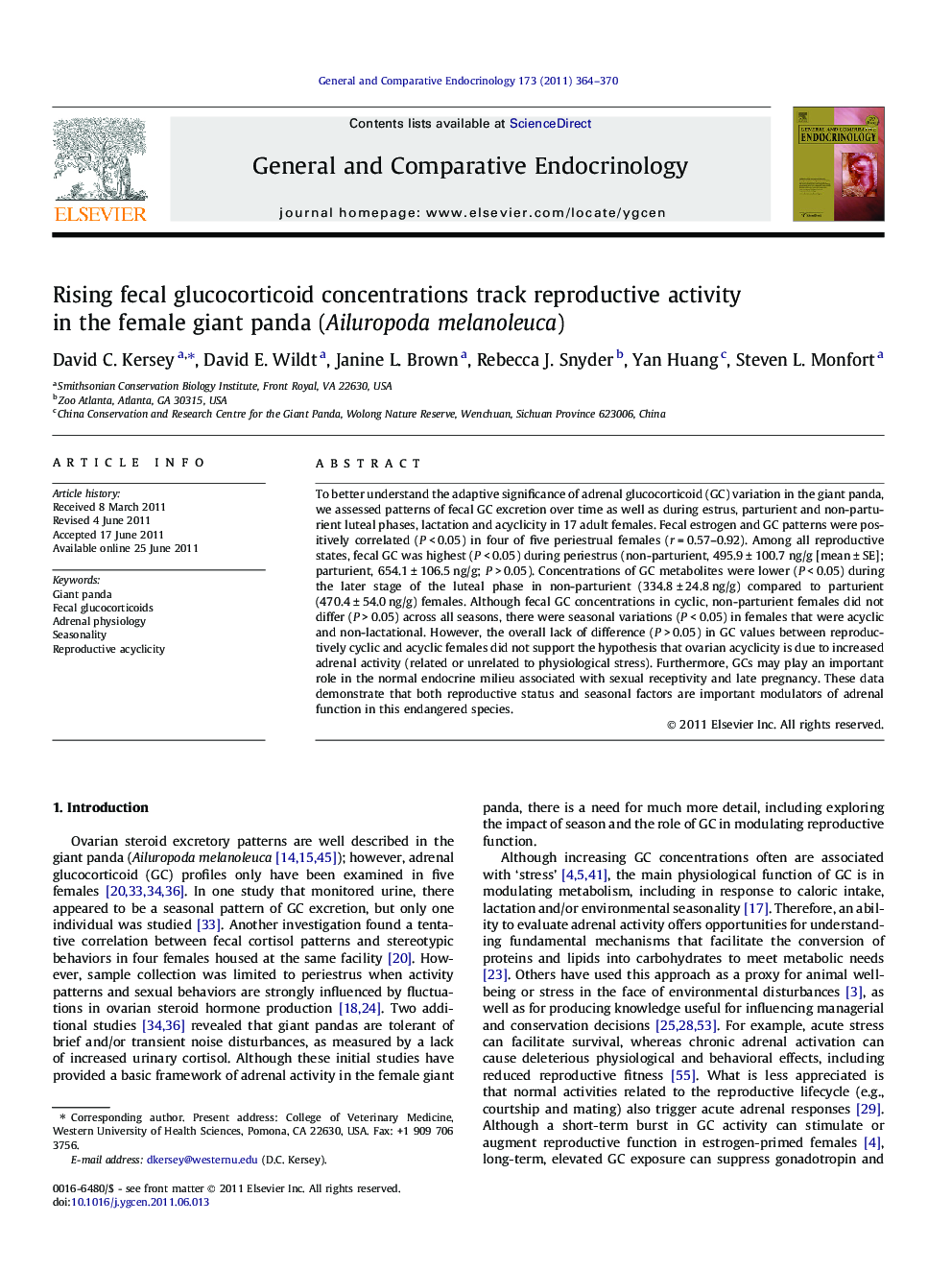| Article ID | Journal | Published Year | Pages | File Type |
|---|---|---|---|---|
| 2800747 | General and Comparative Endocrinology | 2011 | 7 Pages |
To better understand the adaptive significance of adrenal glucocorticoid (GC) variation in the giant panda, we assessed patterns of fecal GC excretion over time as well as during estrus, parturient and non-parturient luteal phases, lactation and acyclicity in 17 adult females. Fecal estrogen and GC patterns were positively correlated (P < 0.05) in four of five periestrual females (r = 0.57–0.92). Among all reproductive states, fecal GC was highest (P < 0.05) during periestrus (non-parturient, 495.9 ± 100.7 ng/g [mean ± SE]; parturient, 654.1 ± 106.5 ng/g; P > 0.05). Concentrations of GC metabolites were lower (P < 0.05) during the later stage of the luteal phase in non-parturient (334.8 ± 24.8 ng/g) compared to parturient (470.4 ± 54.0 ng/g) females. Although fecal GC concentrations in cyclic, non-parturient females did not differ (P > 0.05) across all seasons, there were seasonal variations (P < 0.05) in females that were acyclic and non-lactational. However, the overall lack of difference (P > 0.05) in GC values between reproductively cyclic and acyclic females did not support the hypothesis that ovarian acyclicity is due to increased adrenal activity (related or unrelated to physiological stress). Furthermore, GCs may play an important role in the normal endocrine milieu associated with sexual receptivity and late pregnancy. These data demonstrate that both reproductive status and seasonal factors are important modulators of adrenal function in this endangered species.
► GC increased in parallel with estrogen during periestrus. ► GC increased during late luteal phase of parturient but not non-parturient females. ► Cyclic, non-parturient females exhibited minimal variations in seasonal GC excretion. ► Acyclic females did not appear to suffer from increased adrenal activity.
